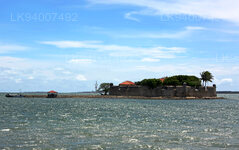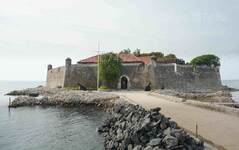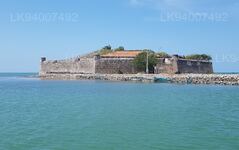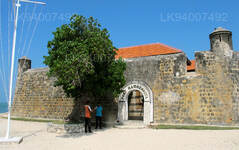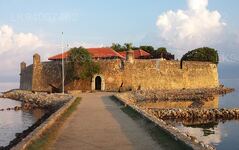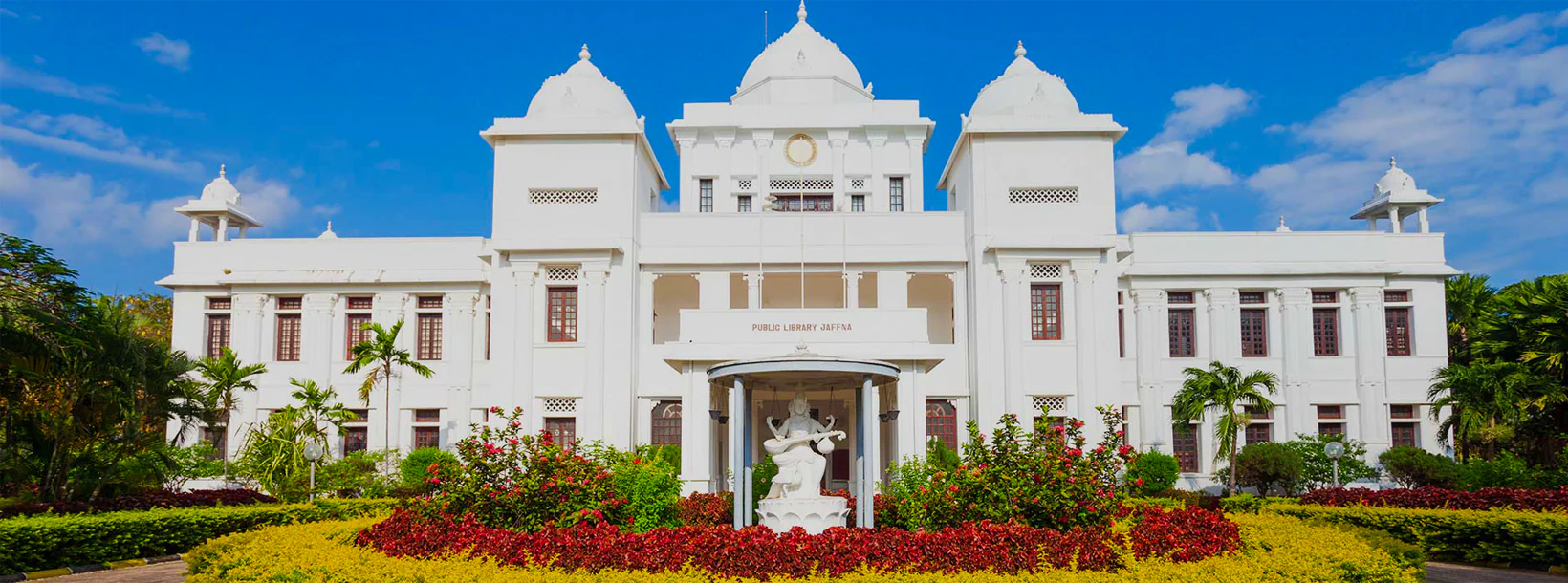
Jaffna City
Jaffna is the main city of Jaffna peninsula in the northernmost district of Sri Lanka. Comfortable intercity busses from Colombo take 10-12 hours to reach the city of Jaffna.
Hammenhiel Fort
Fort Hammenhiel is a fort built around a small island between the islands of Kayts and Karaitivu of Jaffna Peninsula in Northern Sri Lanka.
History
The Portuguese built the fort, to guard the entrance to the Jaffna peninsula, in the mid 17th century of quarried coral naming it Fortaleza do Caes (Fort Royal). The Dutch, under the command of Captains Cornelies Reb, Piester Waset and N. van der Reede, captured the fort in March 1658 and subsequently renamed it Hammenhiel (Heel of the Ham), as they considered that shape of Ceylon resembled a smoked ham and the fort was located at the point where the shank bone projects. The Dutch rebuilt the fort in 1680, constructing a stone breakwater, filling in the hollow ramparts, replacing the upper floor with a stone vault and building a brick lined reservoir to the north of the fort. The prison has nine large dungeons to store gunpowder. The Dutch maintained a garrison of about thirty soldiers under the charge of a Lieutenant or Ensign.
The British used the fort firstly as a maximum security prison and then as an infectious diseases hospital.
In 1971 Rohana Wijeweera, founder leader of the Janatha Vimukthi Peramuna, was detained in the fort after his arrest. It was later used to house other prisoners of the abortive 1971 JVP insurrection. Those detained included Upatissa Gamanayake, Lionel Bopage, Podi Athula (Victor Ivan), Loku Athula (N. Jayasinghe), Prof. Jayadeva Uyangoda and Mahinda Wijesekara (who was to later to become a minister).
Later use
Having plenty of space and the proper location to detain prisoners, it was used thereafter by the Sri Lanka Navy to detain sailors accused of wrongdoings. Now it has been transformed into a tourist hotel run by the Sri Lanka Navy.
About Jaffna District
Jaffna is the capital city of the Northern Province, Sri Lanka. 85% of the populations of the Jaffna and Kilinochchi districts are Hindus. The Hindus follow the Saivite tradition. The remainders are largely Roman Catholics or Protestants, some of whom are descendants of colonial settlers, known as Burghers. The Tamils are divided along caste lines, with the farmer-caste Vellalar forming the majority. Sea products, red onion, and tobacco are the main products in Jaffna.
Jaffna is home to beautiful Hindu temples. An Old Dutch Fort still stands well preserved within which is an old Church. Another example of Dutch architecture is the King's House. No visit to Jaffna is complete without tasting the exquisite Jaffna mango, reputed for its sweetness. About 3 km away is the majestic Nallur Kandaswamy Temple, home to the largest religious festival in Jaffna. The Kayts Harbour is an ancient ship docking site in the Jaffna region.
About Northern Province
The Northern Province is one of the 9 provinces of Sri Lanka. The provinces have existed since the 19th century but they didn't have any legal status until 1987 when the 13th Amendment to the 1978 Constitution of Sri Lanka established provincial councils. Between 1988 and 2006 the province was temporarily merged with the Eastern Province to form the North-East Province. The capital of the province is Jaffna.
Northern Province is located in the north of Sri Lanka and is just 22 miles (35 km) from India. The province is surrounded by the Gulf of Mannar and Palk Bay to the west, Palk Strait to the north, the Bay of Bengal to the east and the Eastern, North Central and North Western provinces to the south.The province has a number of lagoons, the largest being Jaffna Lagoon, Nanthi Kadal, Chundikkulam Lagoon, Vadamarachchi Lagoon, Uppu Aru Lagoon, Kokkilai lagoon, Nai Aru Lagoon and Chalai Lagoon.Most of the islands around Sri Lanka are to be found to the west of the Northern Province. The largest islands are: Kayts, Neduntivu, Karaitivu, Pungudutivu and Mandativu.
The Northern Province's population was 1,311,776 in 2007. The majority of the populations are Sri Lankan Tamils, with a minority Sri Lankan Moor and Sinhalese population. Sri Lankan Tamil is the major language spoken in the province by the vast majority of the population. The other language spoken is Sinhala by 1 percent of the population. English is widely spoken and understood in the cities.

